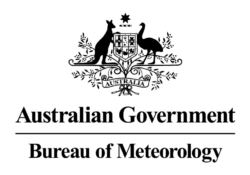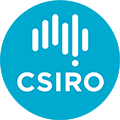Collaborators
Collaboration is key
CAWCR has national and international collaborators who are critical to our research. The key organisations we work with are highlighted below.
ARC Centre of Excellence for Climate System Science (ARCCSS)
The ARCCSS is a partnership of 5 Australian universities (UNSW, ANU, Melbourne, Monash and UTas), with particular ability to focus on more process-oriented Earth-system research, and to nurture the next generation of researchers. The Centre has submitted an expression of interest for renewed ARC funding beyond 2017, with CSIRO and the Bureau as named partners. The ARCCSS is also a partner with CSIRO and the Bureau in the National Environmental Science Program’s Earth Systems and Climate Change Hub, they have representatives on the ACCESS Research Leaders Group and the CAWCR Workshop Organising Committee, and the ARCCSS Director sits on the ACCESS Advisory Group and the CWSLab Steering Committee.
Department of the Environment (DotE)
The Federal Department of the Environment has been a long-term supporter of CAWCR’s climate science, particularly through the Australian Climate Change Science Program (ACCSP) which has continued, under various names, since 1989. The current CAWCR portfolio of ACCSP projects is shown on our Projects page. A priority for the Department has been establishment of Australia’s Earth-system model, ACCESS, which is used by the Bureau and CSIRO for forecasting from weather to climate time-scales. In July 2016, ACCSP will be replaced by the Earth Systems and Climate Change Hub of the National Environmental Science Program (NESP).
National Computational Infrastructure (NCI)
The National Computational Infrastructure houses the supercomputer (“raijin”) on which all of CAWCR’s Earth-system model development is undertaken. The NCI also houses the very large model data sets, in particular from the Climate Model Intercomparison Projects (CMIP) conducted for the International Panel on Climate Change (IPCC). Earth-system science accounts for almost half of the NCI activity. The NCI Director sits on the ACCESS Advisory Group and the CWSLab Steering Committee, and CSIRO and the Bureau are represented on the NCI Board. CAWCR is assisting NCI as it begins planning for the next upgrade of its supercomputer.
UK Met Office (UKMO)
The UK Met Office is the developer of the UM atmospheric model that is core to our ACCESS suite of forecasting and projection models. We are members of the UM Consortium, which currently consists of the UKMO, CSIRO and the Bureau through CAWCR, the Korean Met Agency, and New Zealand’s National Institute for Water and Atmosphere (NIWA). India is also expected to join soon. The Singaporean National Environmental Agency is an associate member. The CAWCR Director and the Bureau’s Head of Research sit on the Consortium Board. The UKMO runs an annual users’ workshop and, through the Consortium, is developing communal modelling infrastructure. The Consortium Board is also seeking to strengthen collaboration in areas of communal interest such as convective modelling and coupled climate modelling.
The UM Users Newsletter has been released, with topics including the development of both the science and application of the UM on regional to global scales, as well as climate prediction.
Other important collaborators are:
- the NCRIS-funded Integrated Marine Observing System, which contributes to data sets that are critical for ocean data-assimilation and model verification, particularly that from the Argo float network;
- the NCRIS-funded NeCTAR eResearch initiative that supports CWSLab development;
- NOAA’s Geophysical Fluid Dynamics Laboratory, which develops the MOM ocean model used in the ACCESS suite and the Bureau’s OceanMAPS (ocean forecasting) system.




